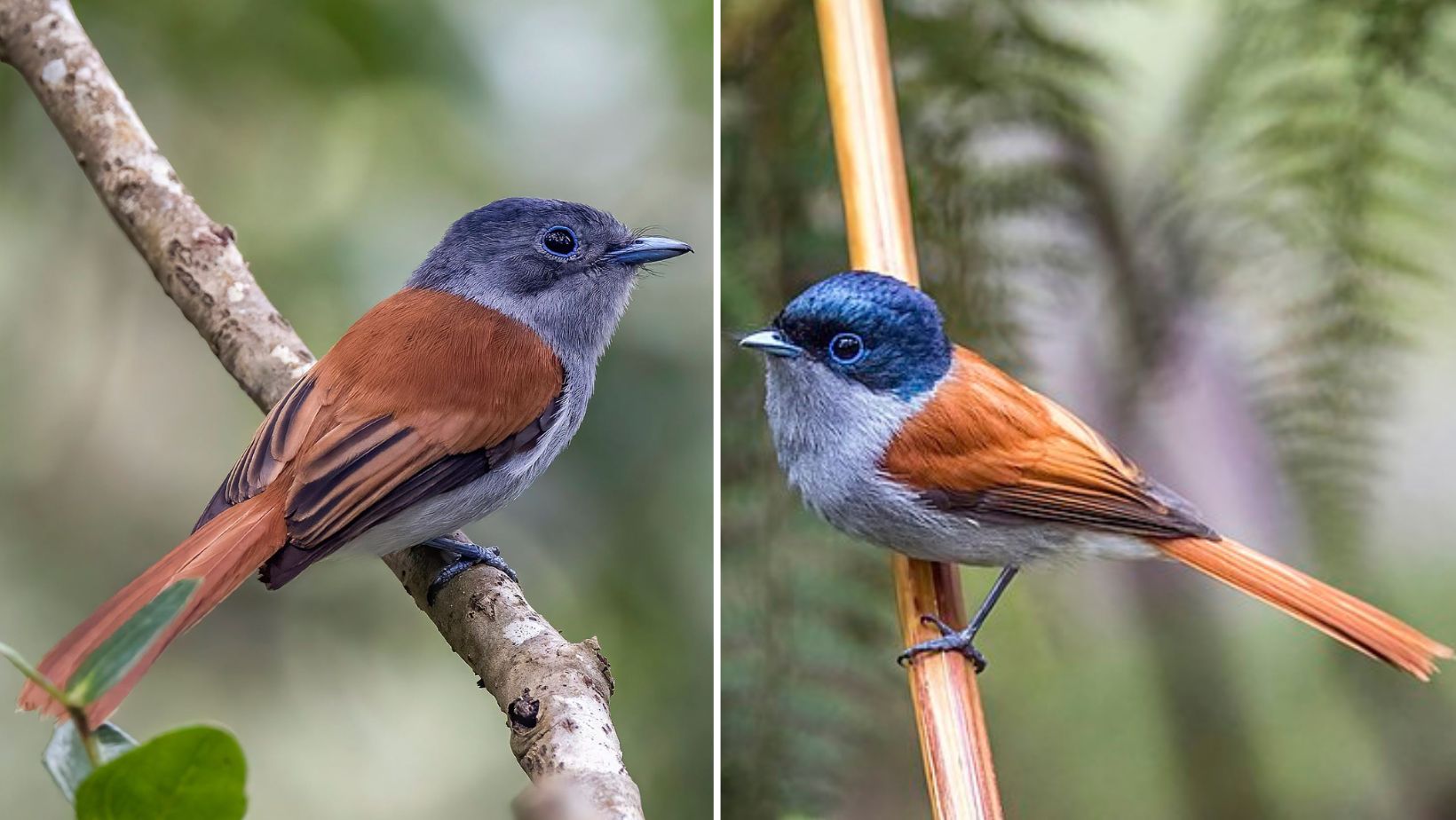
Though he lacks the long tail streamers of some of his cousins, with the strong juxtaposition between blue and red, he is nonetheless just as beautiful.
Meet the Mascarene Paradise Flycatcher
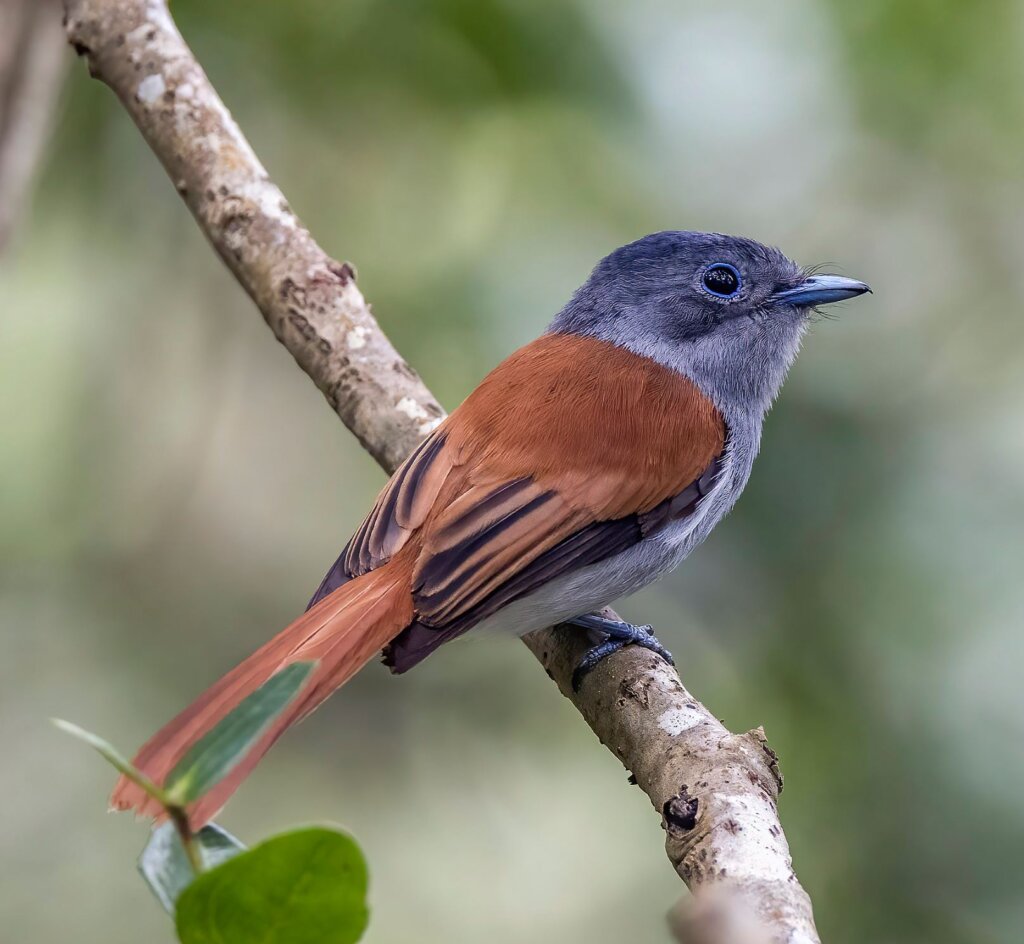 Photo courtesy of Charles J. Sharp/CC BY-SA 4.0 (cropped)
Photo courtesy of Charles J. Sharp/CC BY-SA 4.0 (cropped)
The Mascarene paradise flycatcher (Terpsiphone bourbonnensis) is a captivating bird belonging to the monarch-flycatcher family Monarchidae. Measuring 15 to 20 cm (5.9–7.9 in) in length, the Mascarene paradise flycatcher stands out with its lack of a long tail, which is a common feature in many members of the Terpsiphone genus. The male displays a distinctive appearance, featuring a black head with a grey neck-band, throat, breast, and belly. Its upperparts and tail are chestnut, while the wings are tipped with black. The bill is bright blue, and its legs are of a greyish hue.
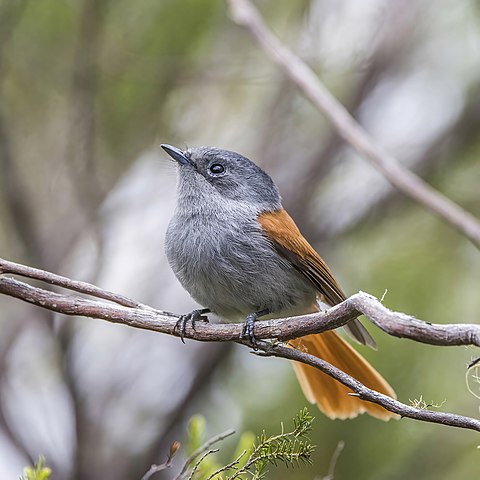 Photo courtesy of Charles J. Sharp/CC BY-SA 4.0
Photo courtesy of Charles J. Sharp/CC BY-SA 4.0
On the other hand, the female is smaller than the male, with a paler bill and a dark-grey head.
The subspecies T. b. desolata is larger than the nominate and exhibits more vibrant plumage.
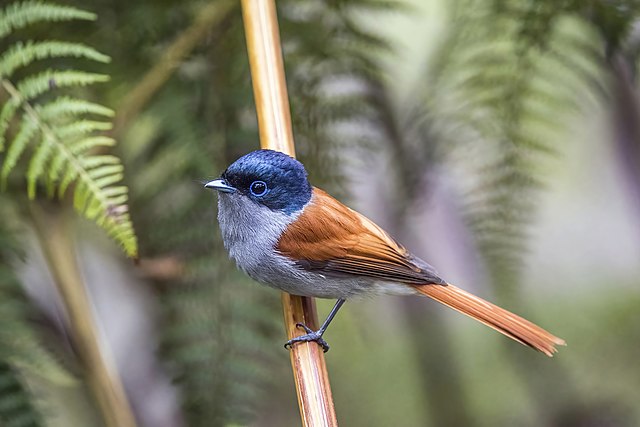 Photo courtesy of Charles J. Sharp/CC BY-SA 4.0
Photo courtesy of Charles J. Sharp/CC BY-SA 4.0
It is native to the Mascarene islands of Mauritius and Réunion and exhibits two recognized subspecies: the nominate subspecies from Réunion, also known as the Réunion paradise flycatcher, and T. b. desolata (Salomonsen, 1933) from Mauritius.
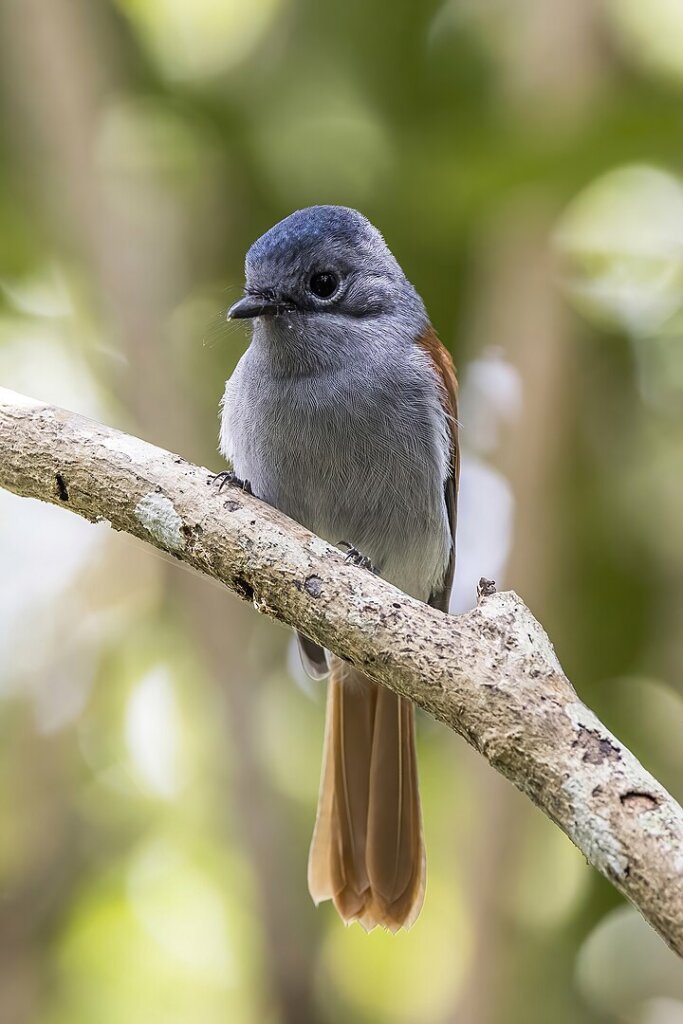 Photo courtesy of Charles J. Sharp/CC BY-SA 4.0
Photo courtesy of Charles J. Sharp/CC BY-SA 4.0
Regarding habitat preferences, the subspecies T. b. desolata primarily inhabits native evergreen forests and some Araucaria cunninghamii and A. columnaris plantations. It favors closed canopies with still air and moderate undergrowth. Conversely, the nominate subspecies found on Réunion displays a more diverse habitat range, occupying various forested habitats, from sea level to elevations of 500–600 m (1,600–2,000 ft).
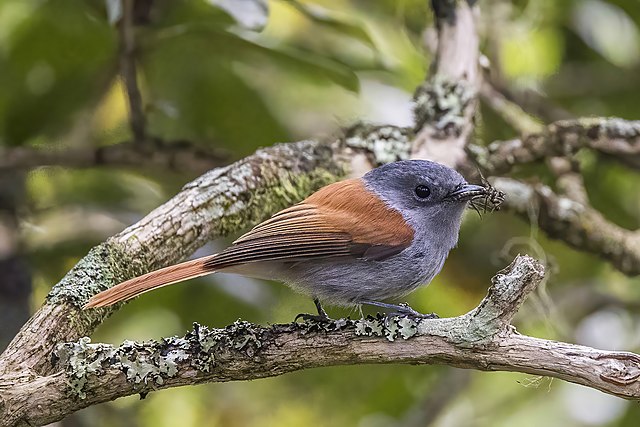 Photo courtesy of Charles J. Sharp/CC BY-SA 4.0
Photo courtesy of Charles J. Sharp/CC BY-SA 4.0
As for its behavior, the Mascarene paradise flycatcher sustains itself by feeding on a variety of insects, including beetles, flies, dragonflies, moths, grasshoppers, and mayflies. It obtains its prey by perching and observing before hawking from the air or sally-gleaning off vegetation. Additionally, it may glean insects while perched. These birds usually forage alone but might join flocks of white-eyes, more commonly observed on Réunion than Mauritius.
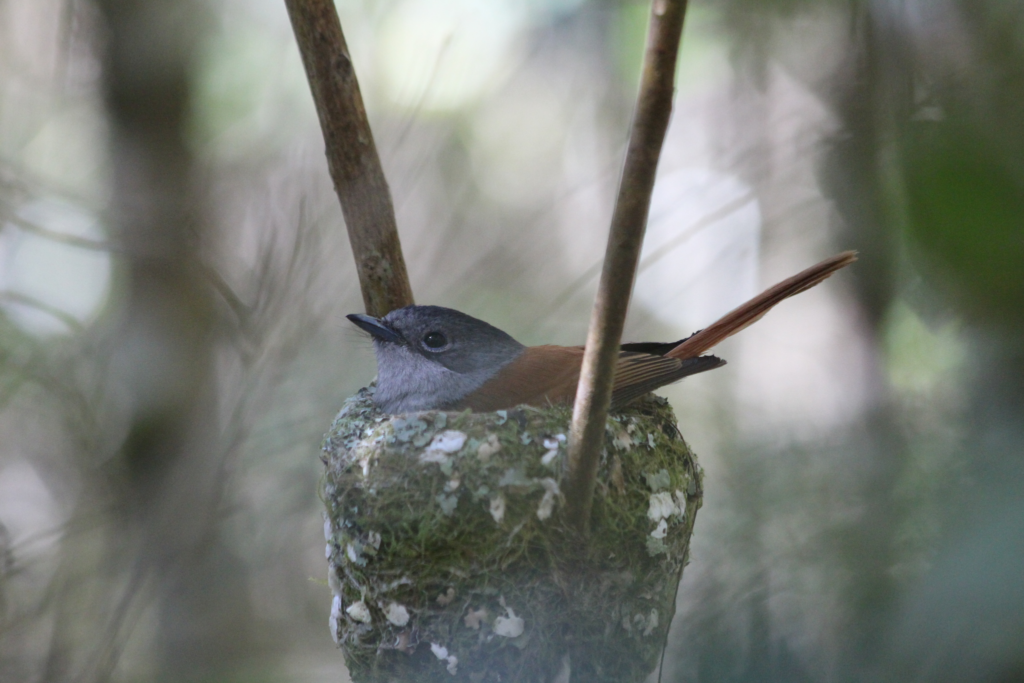 “mascarene paradise flycatcher” by Manuel Schwarz is licensed under CC BY 4.0.
“mascarene paradise flycatcher” by Manuel Schwarz is licensed under CC BY 4.0.
Breeding for this species is seasonal, occurring from August to February on Mauritius and from September to December on Réunion. The nest, shaped like a cone, is constructed using moss, lichen, and spiderweb. The female lays two to three creamy or pink-white eggs adorned with rusty spots. Both parents participate in the incubation, which lasts for 14–16 days. After hatching, the chicks are fed for approximately five weeks and stay in their parent’s territory for 8–9 weeks following fledging.
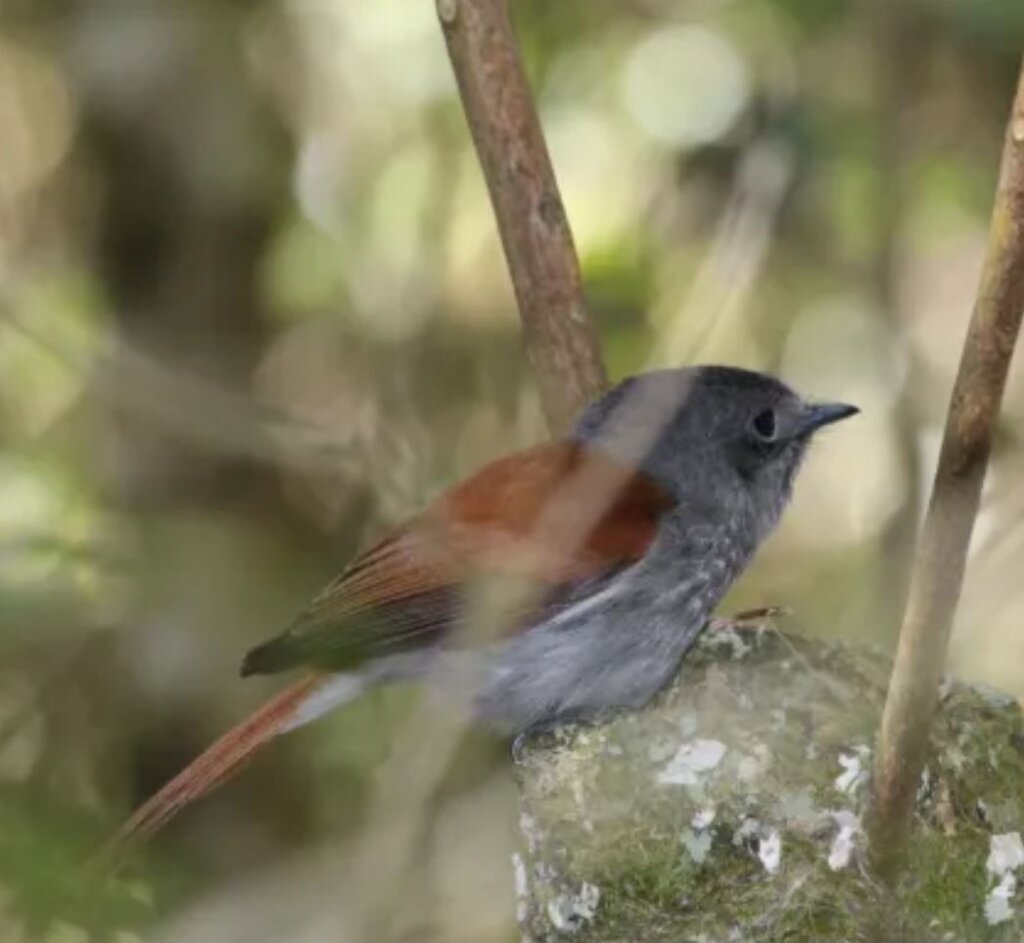 “mascarene paradise flycatcher” by Manuel Schwarz is licensed under CC BY 4.0. (cropped)
“mascarene paradise flycatcher” by Manuel Schwarz is licensed under CC BY 4.0. (cropped)
This bird is regarded as of Least Concern on the IUCN Red List.
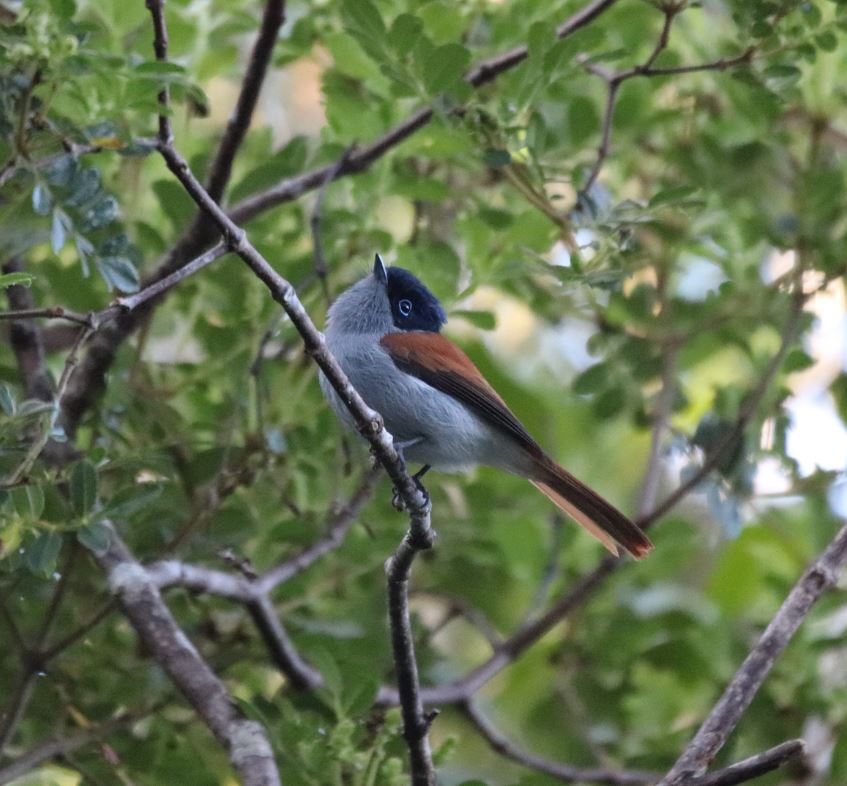 “mascarene paradise flycatcher” by Roland Godon is licensed under CC BY 4.0. (cropped)
“mascarene paradise flycatcher” by Roland Godon is licensed under CC BY 4.0. (cropped)
You can view the young of this species right here:
This article uses material from Wikipedia.org which is licensed under the GNU Free Documentation License via Copyright Wikipedia. Images on this page are the sole property of the photographers (unless marked as Public Domain). Please read the license and or contact the photographers directly before using them for any purpose. Thank you all.
A Vest Of, Clearly Delineated, Finely Flecked Shell-like Scales Is Offset By A Fiery Red Crown And A Set Of Broad Black Eyebrows!
Please SHARE this article with all your bird-loving friends and family.

